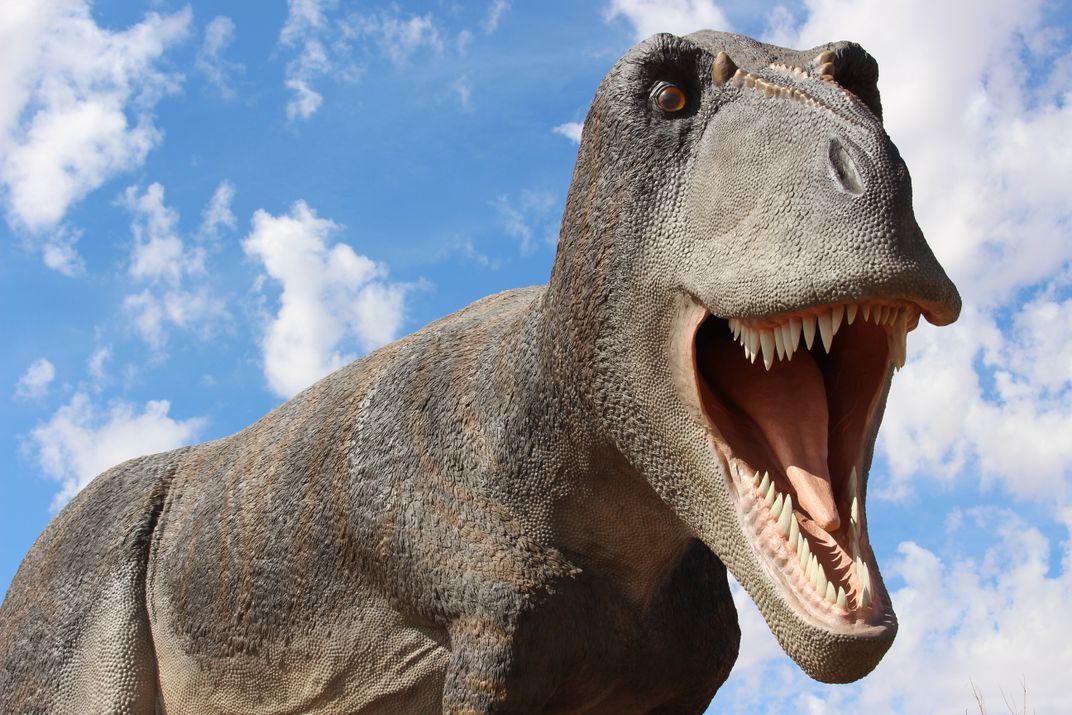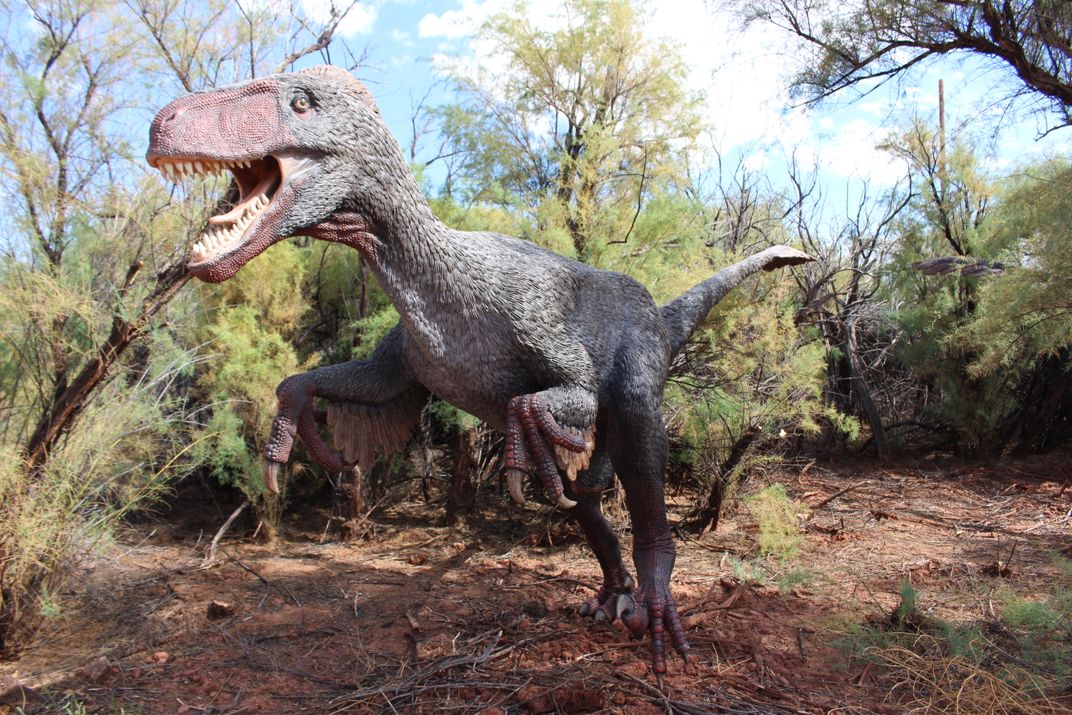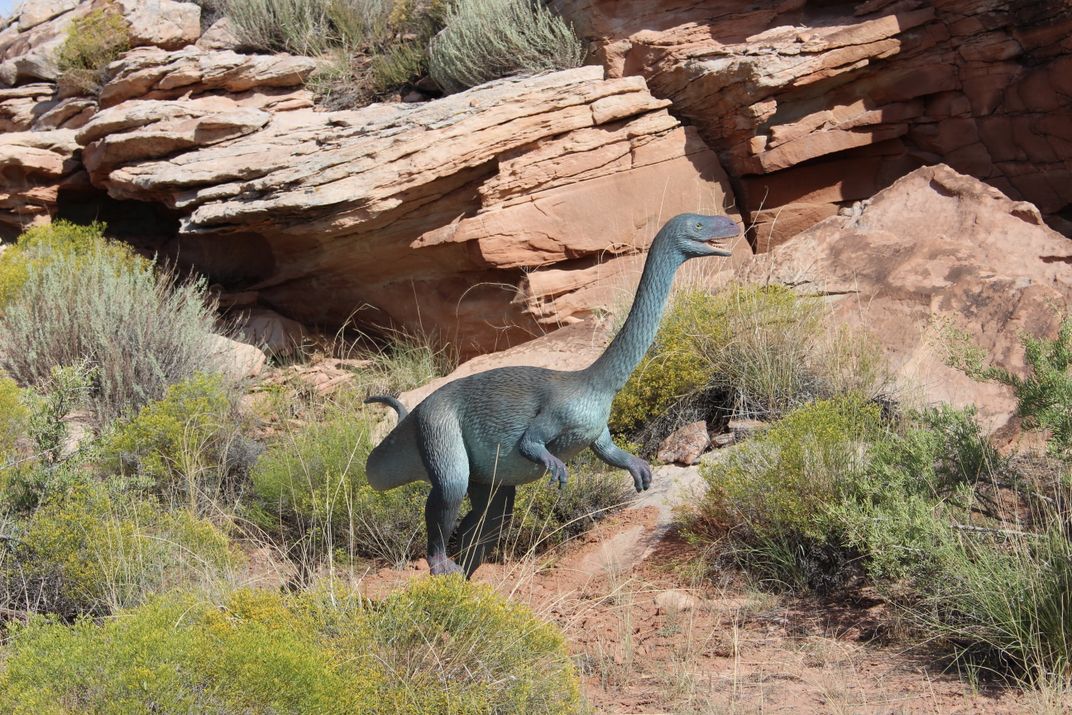New Dinosaur Museum Tracks the “Terrible Lizards” Through Time
The Moab Giants museum in eastern Utah makes a roaring debut
Towering above the sagebrush, the Tyrannosaurus stands with its jaws agape, serrated teeth shining in the desert sunlight. If the dinosaur were alive, it’d be far too close for comfort. Fortunately for visitors, the dinosaur is just a sculpture – part of an entire Mesozoic menagerie created by the Moab Giants museum.
Scattered amongst the scrub along the side of Utah’s Highway 191, the dinosaurs are impossible to miss. But, unlike other roadside monuments scattered throughout the southwest, these are not tourist trap lures. The life-size sculptures are scientifically-grounded representations of the animals that stomped the ground around eastern Utah between 235 and 66 million years ago. Paleontologists, such as Moab Giants scientific advisor Martin Lockley, know this from the tracks the dinosaurs left behind, and it’s these traces that form the core of the new museum.
Moab Giants is unique in putting the focus on these tracks through outdoor displays and interactive exhibits inside. After a lifetime of experience studying dinosaur tracks at the Museum of Western Colorado and University of Colorado, Denver, Lockley took the invitation of geologist Gerard Gierlinski to help create a museum based on a model that Gierlinski used in several Polish museums, but this time with a focus on tracks. While some parts of Moab Giants are still under construction, the museum had their soft launch in early September.
The choice to focus on tracks, rather than skeletons, partly came from the fossils found in the surrounding redrock desert. “Dinosaur tracks are so much more common than dinosaur bone sites throughout Utah and Colorado”, Lockley says, “and they give important, dynamic information about behavior and ecology.” Some of these sites are practically next door to the museum. “There are five dinosaur track locations on public land” within a 15-minute drive of the museum, Lockley says, including the Mill Canyon Dinosaur Tracksite, which boasts the footprints of long-necked sauropods, giant carnivores, “raptors”, and more.
Of course, it’s only natural to look at such tracks and wonder what made them. That’s why Moab Giants boasts 135 full-sized dinosaur replicas. As visitors wander around the outside walk, starting in the Triassic and working up through the Jurassic into the Cretaceous, each set of dinosaur models is accompanied by a panel displaying a cast of a real dinosaur footprint found in the area and what that trace tells paleontologists about dinosaur life.
For the most part, the models are a hypothetical stand-in for the animals that left the footprints. It’s only in rare cases, such as when a dinosaur literally dies in its tracks, that a footprint or other trace can definitely be attributed to a specific dinosaur. Still, the juxtaposition of the lifelike models and the tracks beautifully underscore the importance of trace fossils to paleontology. Skeletons need to be pieced together and brought to life, but footprints are the signs of life – fleeting moments preserved in the depths of time.
Planning Your Next Trip?
Explore great travel deals
Smithsonian magazine participates in affiliate link advertising programs. If you purchase an item through these links, we receive a commission.
/https://tf-cmsv2-smithsonianmag-media.s3.amazonaws.com/accounts/headshot/RileyBlack.png)







/https://tf-cmsv2-smithsonianmag-media.s3.amazonaws.com/accounts/headshot/RileyBlack.png)